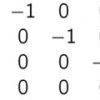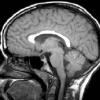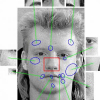CVPR
2005
IEEE
15 years 4 months ago
2005
IEEE
Matrix factorization has many applications in computer vision. Singular Value Decomposition (SVD) is the standard algorithm for factorization. When there are outliers and missing ...
CVPR
2005
IEEE
15 years 4 months ago
2005
IEEE
We present a multiscale method for motion segmentation. Our method begins with local, ambiguous optical flow measurements. It uses a process of aggregation to resolve the ambiguit...
CVPR
2005
IEEE
15 years 4 months ago
2005
IEEE
Projection systems can be used to implement augmented reality, as well as to create both displays and interfaces on ordinary surfaces. Ordinary surfaces have varying reflectance, ...
CVPR
2005
IEEE
15 years 4 months ago
2005
IEEE
Probabilistic models have been previously shown to be efficient and effective for modeling and recognition of human motion. In particular we focus on methods which represent the h...
CVPR
2005
IEEE
15 years 4 months ago
2005
IEEE
Those motion parameters that cannot be recovered from image measurements are unobservable in the visual dynamic system. This paper studies this important issue of singularity in th...
CVPR
2005
IEEE
15 years 4 months ago
2005
IEEE
Interactive or semi-automatic segmentation is a useful alternative to pure automatic segmentation in many applications. While automatic segmentation can be very challenging, a sma...
CVPR
2005
IEEE
15 years 4 months ago
2005
IEEE
We present a quantitative evaluation of SE-MinCut, a novel segmentation algorithm based on spectral embedding and minimum cut. We use human segmentations from the Berkeley Segment...
CVPR
2005
IEEE
15 years 4 months ago
2005
IEEE
Illumination changes are a ubiquitous problem in computer vision. They present a challenge in many applications, including tracking: for example, an object may move in and out of ...
CVPR
2005
IEEE
15 years 4 months ago
2005
IEEE
We describe a novel technique for identifying semantically equivalent parts in images belonging to the same object class, (e.g. eyes, license plates, aircraft wings etc.). The vis...
CVPR
2005
IEEE
15 years 4 months ago
2005
IEEE
The recent explosion of interest in graph cut methods in computer vision naturally spawns the question: what energy functions can be minimized via graph cuts? This question was fi...




